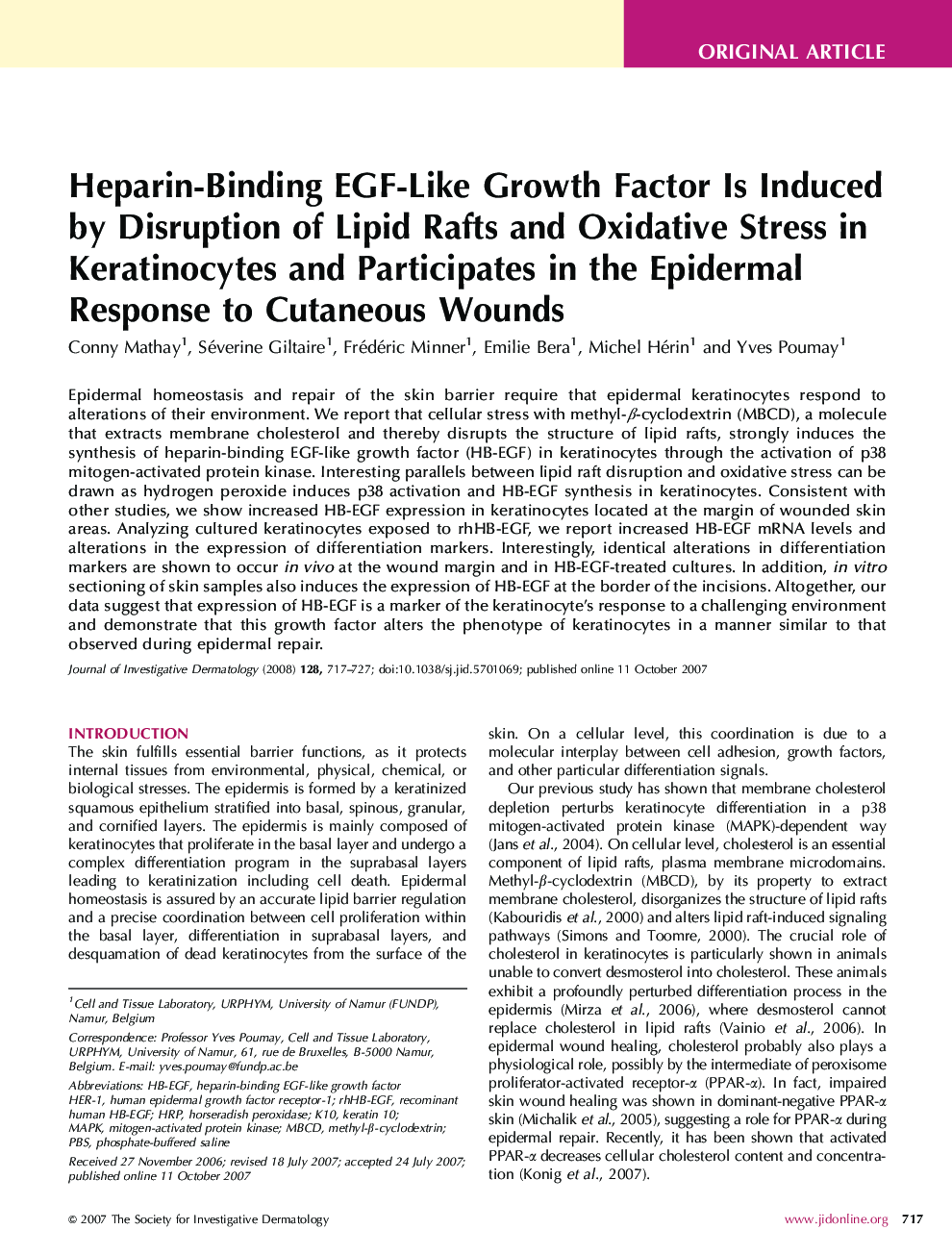| Article ID | Journal | Published Year | Pages | File Type |
|---|---|---|---|---|
| 3216715 | Journal of Investigative Dermatology | 2008 | 11 Pages |
Epidermal homeostasis and repair of the skin barrier require that epidermal keratinocytes respond to alterations of their environment. We report that cellular stress with methyl-β-cyclodextrin (MBCD), a molecule that extracts membrane cholesterol and thereby disrupts the structure of lipid rafts, strongly induces the synthesis of heparin-binding EGF-like growth factor (HB-EGF) in keratinocytes through the activation of p38 mitogen-activated protein kinase. Interesting parallels between lipid raft disruption and oxidative stress can be drawn as hydrogen peroxide induces p38 activation and HB-EGF synthesis in keratinocytes. Consistent with other studies, we show increased HB-EGF expression in keratinocytes located at the margin of wounded skin areas. Analyzing cultured keratinocytes exposed to rhHB-EGF, we report increased HB-EGF mRNA levels and alterations in the expression of differentiation markers. Interestingly, identical alterations in differentiation markers are shown to occur in vivo at the wound margin and in HB-EGF-treated cultures. In addition, in vitro sectioning of skin samples also induces the expression of HB-EGF at the border of the incisions. Altogether, our data suggest that expression of HB-EGF is a marker of the keratinocyte's response to a challenging environment and demonstrate that this growth factor alters the phenotype of keratinocytes in a manner similar to that observed during epidermal repair.
